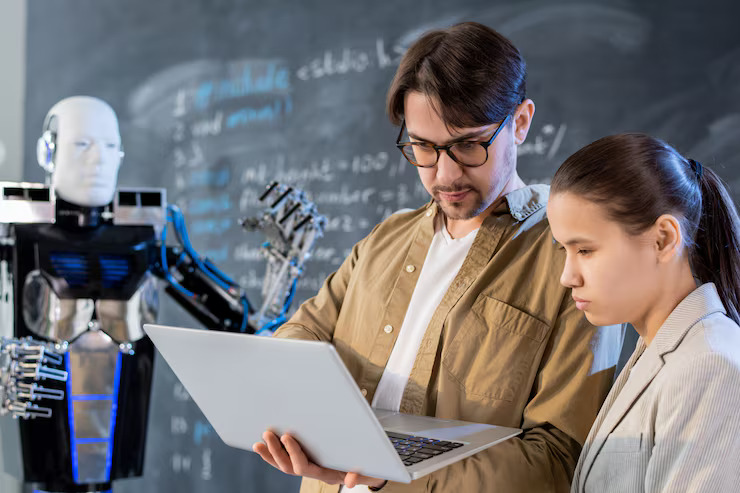Machine learning is being used in every field. Every app and tool has smart features. These features work through algorithms. Analysing data with ML seems easy. Accurate and intelligent predictions are also available from ML. This field is growing in every industry. Health finance and tech are all using ML. If you want to learn ML, the basics should be clear. Basic concepts are essential to under every project. ML has daily applications. The field is developing new tools every day. You will learn to learn with speed. Deep study of ML is the path to success.
First of all, it is important to understand the basic concepts. After that, you can reach the smart level. Moreover, every difficult task requires skill to solve. Sometimes simple steps work, and sometimes deeper logic is needed. By combining these two approaches, you can become an expert. In addition, in today’s article, we will discuss 6 top ML concepts. These concepts will be helpful for you, and they will also improve your ML skill level.
Under the concern of education
Supervised learning is the most widely used method of machine learning. In this technique, we feed labelled data to the machine. Therefore, the two types of data are input and output. As a result, the machine learns patterns and relationships from examples.

The model then learns from examples and makes predictions on the images. Supervised learning is mainly used in classification and regression problems. You can use supervised learning to detect email spam, predict disease, and even predict stock prices.
Not under the concern of education
In unsupervised learning, the machine is given data that has no labels. That is, the machine is not told what the result of the data is. In it, the machine recognizes its patterns and textures. The main goal of unsupervised learning is to enable the machine to understand hidden structures and discover patterns. For example, if you are given customer data, the machine can segment them into groups based on age, gender, or purchasing behaviour. This technique is used for segmentation, clustering, and anomaly detection. Unsupervised learning is mainly used in market research and customer behaviour analysis.
Reinforcement learning
-
An overview of reinforcement learning
In reinforcement learning, the agent takes actions in the environment. After each action, feedback is taken in the form of reward or punishment. Consequently, this feedback helps the agent to improve its actions. During this process, the agent refines its decisions and refines its strategy. Therefore, this learning technique is used for continuous decision-making and improvement.
-
The learning process
In reinforcement learning, the agent improves its actions over time. The agent adjusts its decisions based on the feedback. Through this process, the agent understands its environment and optimizes its actions. With each new interaction, the agent learns and improves its performance.

-
Reinforcement learning applications
Reinforcement learning is used in robotics, gaming, and autonomous vehicles. For example, self-driving cars use reinforcement learning to learn road safety. Moreover, with this technique, machines interact with their environment and continuously improve their decisions. In addition, this technique is also used in robotics to improve the task performance of robots.
Overfitting and underfitting
Overfitting and underfitting plague machine learners. A model prone to overfitting remembers the training data so well that its skill deteriorates when testing uses the same data, failing to predict new situations. A mean model can only memorize sample details but lacks generalization skills. Underfitting occurs because the learner does not correctly understand the training data, resulting in poor performance.
Both constraints undermine the power of the model to apply its lessons broadly. We use strategies like regularization and cross-validation to defeat such brothers. This shows that the model performs equally well with its training data and additional material, maintaining its ability even when faced with unknown facts.
Feature Engineering
Feature engineering is an important step in machine learning. In, we process raw data and create valuable features from it. This process occurs when you need to put your data into a format suitable for the model. Attributes are properties that help the model display insights. Robust and meaningful features improve model performance.

If the features are poor, the accuracy of the model may also decrease. Domain knowledge is very important in feature engineering because you need to understand your data so that you can create useful features from it.
Validation of the model
Model validation is the final and essential step in machine learning. This means we test the model to make sure it doesn’t overfit the training data. Splitting the data into training and testing sets is part of model validation. The model is trained on the training set, and the model is tested on the testing set. This process is essential to evaluate the real-world performance of the model. Through model validation, you can measure model accuracy, precision, and recall. It also tells you under which conditions the model is performing and under which conditions it is failing.
Conclusion
Machine learning can be complicated to understand, but if you understand the basic concepts, building and optimizing models becomes easy. Understanding supervised versus unsupervised sleep reinforcement learning helps you make data-driven decisions. These techniques are essential to making your projects successful. Overfitting vs. Underfitting. It is important to handle such problems to ensure the accuracy of your models.
If these problems are not properly managed, the model will not perform well on new data. By handling these isissuesyou can improve your model. Feature engineering gold model validation is also a key step that improves model accuracy and performance. These measures help the model perform well on new data. Machine learning is a continuous process. The more you practice and learn new techniques, the more you will improve your skills. Machine learning never stops, and every step makes you better.

























